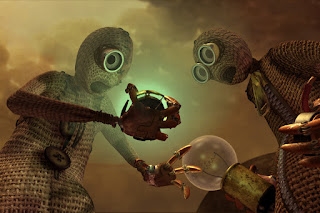Storyboard for short film
This week, Emma and I created the storyboard for our short film. We created one page per scene, with the exception of the final two. The final two scenes were combined into the last scene of the storyboard. Emma and I decided to split up the script in order to create the storyboard. Emma completed scenes 1-5, while I completed 6-11. Before creating the storyboard, Emma and I met up to discuss how we wanted to go about developing it. We knew we wanted to use it as an outline for the film itself, without packing every little detail into it. This way, we knew generally how we want the short film to be filmed, but also leaving room for creative freedom once we actually begin the filming process. We also knew we wanted to include variation regarding certain angles and shots so that the audience would not get bored.
Within the storyboard, we sketched out different aspects of each scene to integrate into our short film. We included descriptions of each camera shot/angle, and how it applied to the scene. We wanted to play around with different types of shots, so certain moments in each scene were captured through different viewpoints. For example, in scene 6, the first moment in the scene is shown through a POV shot, overhead shot, and medium shot. We also played with different effects, such as vision blur which transitions into a clear picture. In opposition, the scenes containing the most action and/or dialogue we kept minimal. We didn't want too much going on regarding the filming itself, as we did not want to distract from the plotline. We also made it so that the transitions between scenes were smooth. For example, the last part of scene 8 is a POV shot in which the main character's vision goes dark and the first part of scene 9 is a POV shot of the main character regaining her vision. This helps to simplify the film and make sure the audience stays enticed.
Overall, Emma and I created this storyboard with the intention of ensuring the audience was captivated the whole time. We wanted to include different shots and angles to make the film more interesting, but only to an extent so it was still simple enough for the audience to follow. We want to focus mainly on the plotline, and use our film techniques only to emphasize it.



Comments
Post a Comment